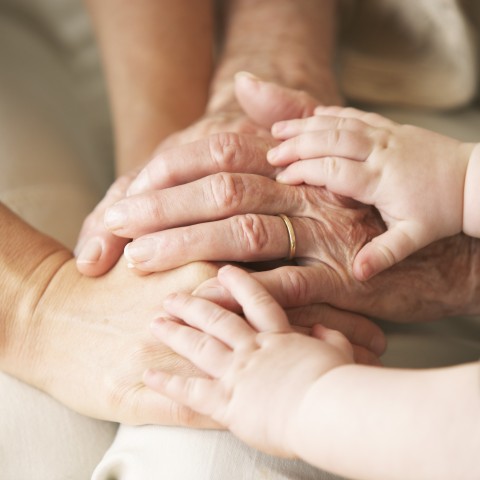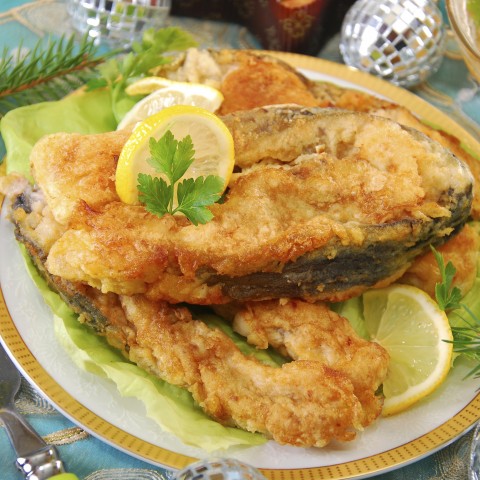
Are you learning Czech, planning to visit the Czech Republic, starting a business here, or even settling down in this cute, Central European country? Great! I’m sure you want to know more than just the basic info (like what the currency is and whether it’s okay to look a stranger in the eye…).
Learning about Czech culture is essential if you want to really understand not just the language, but also how things work here.
And let me tell you, just about everything is different here than in the U.S. or Western and Eastern Europe.
As you explore Czech culture and customs, you’ll find that they share a lot in common with those of Austria or Germany. These two countries have greatly influenced the attitudes, traditions, and cuisine of the Czech Republic—and no wonder! The Czech Republic was part of the Austria-Hungary Empire for centuries and only became autonomous in 1918. Not so long ago, right? Another aspect to consider is its geographical position in the heart of Europe, which has fostered influences from surrounding countries.
One thing that might surprise you is that while we speak a Slavic language, our political, economic, and social structures have shifted toward Western European trends.
Do you feel ready to continue exploring this unique culture? Then read on!
In this lesson, you’ll learn about Czech values, religions, family and work life, traditions, food, and art.If this seems like a bit much, you might want to start with this quick overview of the Czech culture and language.
 Table of Contents
Table of Contents
- Values and Beliefs
- Philosophies and Religions
- Family and Work Life
- Art and Architecture
- Cuisine and Food
- Traditional Holidays
- How CzechClass101.com Can Help You Learn Czech in a Fun Way
1. Values and Beliefs
A key component in understanding Czech culture is knowing what values Czechs hold important, and why.
To start, here’s the typical Czech attitude and approach to life:
- ➢ Careful planning in business and personal life, and a strong need for a sense of security.
Even though things have changed since the Communist era, most people still value security. It’s safe to say that Czechs aren’t risk-takers.
For example, Czechs are unlikely to support a business idea if the outcome is uncertain, and mottos like “Think Big” are frowned upon here.
- ➢ Czech people value a forward-thinking, logical, efficient, and practical approach.
Another thing you need to know before you make false assumptions about the Czech nature is this: Czechs are very private people…until they get to know you. We often seem formal and reserved and it’s considered impolite to ask “a newcomer” too many questions.
- ➢ Don’t be surprised if your new Czech colleagues seem a bit aloof. Invite them out for a beer or a glass of wine, and you’ll see how quickly things change!
Even after you’ve developed a personal relationship (first name basis or after your first hangover), Czechs do open up a bit, but we are never overly emotional. There will be no hugs, no beaming, and certainly no ‘I love yous.’
When it comes to problem-solving and jarred situations, Czechs tend to be extremely non-confrontational. This isn’t because we don’t want to hurt anyone’s feelings. We simply don’t want to get involved. Even in more extreme situations that would be impossible not to notice, we might turn a blind eye.
Which leads us to:
- ➢ We can get super passive aggressive. Let’s call it an indirect approach, shall we?
If you’re very new to the Czech culture, make sure to check out these useful Czech phrases and greetings. You know what they say: You might be awesome, but if you don’t make a good first impression, nothing else matters.

Everything in life has to be carefully planned.
2. Philosophies and Religions
Christianity is the dominant religion in the Czech Republic…but we are one of the least religious societies in Europe. Yep. We love Christmas and St. Nicholas Day (more on that later), but to most Czechs, they’re just lovely traditions without any spiritual meaning.
Let’s look at some dry facts:
- ➢ In 1910, Roman Catholicism was the professed religion of 96.5% of the Czech people.
➢ In 2011, the population’s proportion of Roman Catholic Church members decreased from 26.8% to 10.4%.
The decline began right after World War I and the breakup of the Austria-Hungary Empire, partly due to a mass movement that promoted anti-Austrian and anticlerical sentiments.
The communist regime (1948-1989) quickly dissolved the rest of the religion in the Czech Republic. The government (to which religion of any kind became undesirable) confiscated most of the Church’s property.
The philosophy behind this? If our Russian comrades didn’t need God, why should our working class?
3. Family and Work Life
In the Czech Republic, family is the center of our social structure.
When it comes to relationships and dynamics, the Czech family culture gets a bit more complicated. Obligation to the family is the most important priority, but this only applies to the closest family members—children, parents, and sometimes siblings. Family gatherings and Sunday lunches are quite common, but they’re usually pretty small and private.

Family first.
If you’re new to the Czech work environment, refrain from using someone’s first name or an informal greeting. These are signs of friendship and it is considered rude to use informal language with colleagues unless the other party has indicated it’s okay. This bridge to informal communication should be offered by the woman, the older person, or the person of higher status.
- ➢ When it comes to business and closing deals, don’t expect things to move forward swiftly.
The Czech business culture facilitates a slower pace of getting things done, especially when strangers or foreigners are involved. It will probably take more than just one meeting for your Czech business associates to become familiar with you. Czechs generally don’t trust strangers and they’re slightly scared of new things. If you want to succeed, you should practice meditation if patience isn’t one of your strongest virtues.
Also:
- ➢ Czechs are too polite (and afraid of a direct approach or confrontation) to tell you “no” right away. You might often hear “we will see” and “it’s complicated” and “perhaps.” These statements typically indicate a negative answer.
If you’re getting ready for a business meeting in the Czech Republic, you might find these basic conversational phrases useful. They make a great basis for any kind of meeting or conversation in Czech.
4. Art and Architecture
The Czech Republic is famous worldwide for its outstanding handmade Bohemian glass and crystal—each piece mouth-blown and manually decorated.
If you’re a fan of art, you might be familiar with the name Alphonse Mucha (1860-1939). He was one of the best Czech painters and decorative artists, and in his time, he was pretty much a celebrity. Companies hired him to draw advertisements for them and he collected very nice sums for his labor.
Mucha is best known for his series of 20 large canvases named The Slav Epic. By the way, large means large. 26 by 20 feet on average. This pompous work of art depicts the history of Czechs and other Slavic peoples.
There is a strong Czech tradition in the graphic arts. Czechs love caricature, and it was even more popular during hard times…for example, before World War II. Josef Čapek (who was an older brother of the writer Karel Čapek, who happens to be the guy who invented the word “robot”) is remembered for a series of drawings entitled The Dictator’s Boots. This was from the time when Adolf Hitler’s star was rising higher.
Czech graphic art is usually based on popular, narrative art.
Since the nineteenth century, Czech painters and graphic artists have followed European movements, but Realism generally prevails.
Czech art traditions feature a mix of German and Slavic influences, though our architecture is strikingly influenced by Italy. Our capital, Prague, is a beautiful gem with breathtaking Renaissance and Baroque architecture.
If you’re more into modern architecture, you won’t be disappointed. The clean and sharp Functionalist style became very popular in the 1920s and there are numerous villas, apartment buildings and interiors, factories, office blocks, and even cafés all over the country displaying this style.
5. Cuisine and Food
You can probably guess that the table manners in the Czech Republic are Continental: the fork is held in the left hand and the knife in the right. Unlike Americans, we don’t typically put the knife down while eating and we keep the fork in our left hand throughout the entire meal.
Have you been invited to a family lunch? There are a few rules to follow:
1. The oldest or honored guest is generally served first.
2. You will be offered second helpings. You should refuse and wait for the hostess to insist.
3. Compliment the meal while eating. Ask for the recipe even though you know you’ll never make the meal at home.
4. When you’ve finished, lay your knife and fork across the right side of your plate.
The typical Czech meal consists of soup as a starter and a meat-heavy entrée.
The Czech diet contains lots of pork, beef, poultry, and organ meats such as liver and kidneys. The most typical side dishes are dumplings, cabbage, or potatoes. You’ll probably feel very full after a meal, even though the portion sizes are nowhere near the average American ones.

Deep-fried breaded carp is a popular Christmas Eve dinner.
- → Are you going out to eat? Check out this lesson on speaking Czech at a restaurant.
6. Traditional Holidays
There are seven public (bank) holidays in the Czech Republic:
- New Year’s Day (January 1) – This is also the Day of Recovery of the Independent Czech State, which took place in 1993.
- Liberation Day (May 8)
- Day of Slavonic Apostles Cyril and Methodius (July 5)
- Jan Hus Day (July 6)
- Day of Czech Statehood / St. Wenceslas Day (September 28)
- Independence Day (October 28) – It has nothing in common with the American Fourth of July; it’s the anniversary of the establishment of an independent Czechoslovakia in 1918.
- Day of Students’ Fight for Freedom and Democracy (November 17)
On top of that, there are three Christmas days, and Easter Monday.
Even though most Czechs are atheist, they celebrate Christian holidays including Easter and Christmas. These holidays were recognized even during the Communist era.
Our main Christmas holiday is Christmas Eve, when families decorate their Christmas trees while watching TV and eating Christmas cookies. The dinner traditionally consists of fish (preferably carp), or pork or chicken schnitzel, with potato salad.
Like I mentioned earlier, Czechs are very family-oriented and private. This means it’s not common to invite friends over during Christmas.
- → Curious to learn more on this topic? Then check out our lesson Video Culture Class: Czech Holidays!

Czech Christmas cookies are quite elaborate and are usually made two to three weeks ahead.
7. How CzechClass101.com Can Help You Learn Czech in a Fun Way
We hope you enjoyed this lesson on Czech traditions and culture. Did you learn anything new? How does Czech culture compare to that in your country? We look forward to hearing from you!
If you’re taking your Czech studies seriously, you have two solid options: grab a Czech grammar book or learn online. We think the latter is much more convenient, don’t you?
CzechClass101.com will make learning Czech easy, exciting, and fun. With us, it’s not about endless memorizing or thick textbooks. Learn Czech with us and make progress faster than you could imagine!
What can you find here?
- English-to-Czech translations and pronunciation tips/tricks
- Over 630 audio and video lessons
- Vocabulary learning tools
- Spaced repetition flashcards
- Detailed PDF lesson notes
Sign up now—it’s free!










